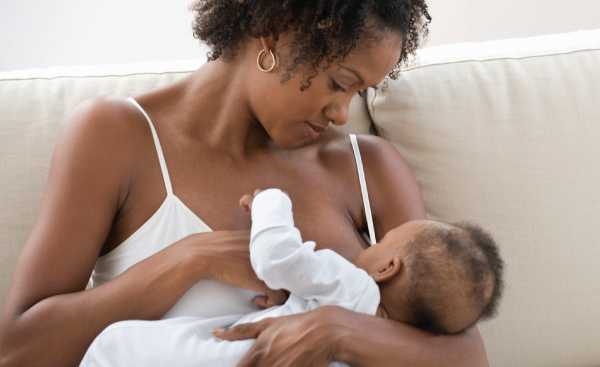THE TRUTH ABOUT BREASTFEEDING
Ever heard that for one to produce enough breast milk they need to eat a special diet or that breastfeeding is a sure form of contraception? These are just some


Ever heard that for one to produce enough breast milk they need to eat a special diet or that breastfeeding is a sure form of contraception? These are just some of the common beliefs that have transcended time and misled many mothers, thanks to being shared over and over again. In honour of World Breastfeeding Week this month, we sought to find out the facts about breastfeeding from Evelyne Kongoro, Lamaze International certified lactation coach.
1 Small breasts EQUAL less milk
FALSE
What’s size got to do with it? According to Evelyne, NOTHING! Milk production, just like any other commodity, works on the basis of demand and supply. The more demand there is for milk by a baby, the more a mother’s body produces it. According to Evelyne, all a mother needs to do to create demand for milk is to put the baby on the breast as much as possible. Where the mother is not close to the baby, then she needs to pump as much as possible and as often as possible.
2 Some women simply just DON’T have milk
FALSE
Evelyne says that as long as a woman is pregnant and delivers her child full term, she should have milk. “Pregnancy is not just about your baby growing but the body also prepares for the journey after birth. By the time you are delivering, your brain and body are ready and all they need is stimulation, which is provided by the baby. Women should insist on breastfeeding their babies within 30 minutes of birth. From then, the body responds to this stimulus as the laws of demand and supply come into play,” she explains.
3 Breastfeeding is PAINFUL
FALSE
According to Evelyne, it need not be although it may be uncomfortable in the beginning. She adds that most breastfeeding pain stems from cracked nipples brought about by poor latching – the baby’s mouth position on the breast. To attain the correct latching position, lightly tickle the ridge between the baby’s nose and mouth. The baby should open their mouth widely and the mother can insert her nipple.
The baby’s mouth should cover the nipple and most, if not all, of the areola – the black part. The mother’s breast should rest at the middle ridge of the baby’s upper jaw, not the front of its mouth as this is when the friction between the nipple and the baby’s gums leads to cracks. In case the pain is not related to cracked nipples or a full breast, consult a doctor.
4 Breastfeeding can HELP one lose weight much faster
TRUTH
Breastfeeding is work! According to medical experts, breastfeeding can help a mother burn between 500 to 800 calories a day. As Evelyne explains, breastfeeding also encourages the release of the hormone oxytocin which helps contract the cervix back to its original size. Note, however, that weight loss is also subject to how much food the mother is consuming. It is also not an automatic and reliable weight loss programme for all mothers. If one wants to lose extra pounds, some exercise may be in order but only after a green light from their doctor.
5 Breastfeeding MAKES breasts sag
FALSE
While breastfeeding can change the size and fat distribution of breasts, with adequate support from a good nursing bra, the breasts will get back to normal once nursing is done.
6 Breastfeeding is a SURE form of contraception
SOMEWHAT
Breastfeeding as a form of contraception has only worked for some women when the baby is younger than six months, and is exclusively and frequently (two to three hours) breastfed. However, some women’s bodies bounce back faster and their menstrual cycle gets back to work at least four to six weeks after pregnancy. It is advisable to get a comprehensive contraceptive plan if this is the case.
7 Mothers need a SPECIAL diet while breastfeeding
FALSE
Many moms may need to sit down for this. FALSE! As Evelyne explains, according to research, the extra calories one needs to breastfeed are actually the equivalent of a peanut butter sandwich. The only diet a mother needs is the one doctors have been recommending since the beginning of time – a balanced diet, at normal times and in enough quantities for one’s need. This is mind blowing especially considering how much food many mothers subject themselves to in order to ‘boost’ milk supply. Evelyne further advises breast milk is 90 per cent water and perfectly balanced to meet the baby’s nutritional demands and antibodies for the first six months of life so there is no need to give babies water. For mothers, however, staying hydrated is key.
Published in August 2016





